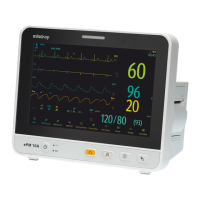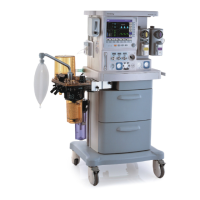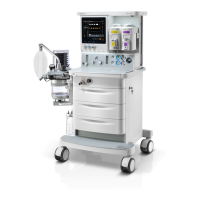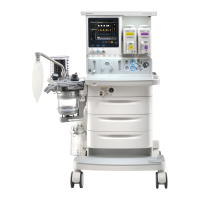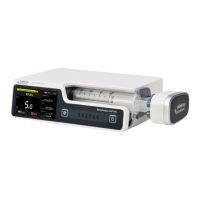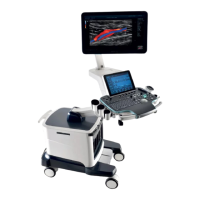16 - 7
◆ at respiration rates below 8 rpm
◆ during ventilation with tidal volumes lower than 8 ml/kg
• for patients with acute right ventricular dysfunction (“corpulmonale”).
16.6.10 Overlapping IBP Waveforms
The IBP waveforms can be displayed together. To combine IBP waveforms, follow this procedure:
1. Access Tile Layout by either of the following ways:
◆ Select the Screen Setup quick key → select the Tile Layout tab.
◆ Select Main Menu quick key → from the Display column select Tile Layout.
2. Select the waveform area where you want to display the overlapped IBP waveforms, and then select the IBP
waves to be overlapped on the left side of the same line.
3. Repeat step 2 in another waveform area if needed.
4. Select to save the setting and exit the window. The main screen will display the overlapped IBP waves.
Selecting the overlapped IBP waveforms on the main screen opens the Overlapping Waveform Setup menu,
where you can make the following settings:
■ Scale
◆ Set Left Scale for the arterial pressure.
◆ Set Right Scale for the venous pressure.
◆ Set CVP Scale individually if the CVP waveform is combined and CVP unit is different from IBP unit.
◆ Set ICP Scale individually if the ICP waveform is combined and ICP unit is different from IBP unit.
◆ Set PA Scale individually if the PA waveform is combined.
■ Switch on or off Gridlines to show or hide gridlines in the overlapped waveform area.
■ Set Speed for the overlapped waveforms.
• The unit of CVP scale is consistent with CVP parameter unit.
16.7 Measuring PAWP
Pulmonary Artery Wedge Pressure (PAWP) values, used to assess cardiac function, are affected by fluid status,
myocardial contractility, and valve and pulmonary circulation integrity.
Obtain the measurement by introducing a balloon-tipped pulmonary artery flotation catheter into the
pulmonary artery. When the catheter is in one of the smaller pulmonary arteries, the inflated balloon occludes
the artery allowing the monitor to record changes in the intrathoracic pressures that occur throughout the
respiration cycle.
The pulmonary wedge pressure is the left ventricular end diastolic pressure when the airway pressure and valve
function are normal. The most accurate PAWP values are obtained at the end of the respiration cycle when the
intrathoracic pressure is fairly constant and the artifact caused by respiration is minimal.
• PAWP monitoring is not intended for neonatal patients.
